Benefits of Bullet Journaling
The basics behind it and why I still do it
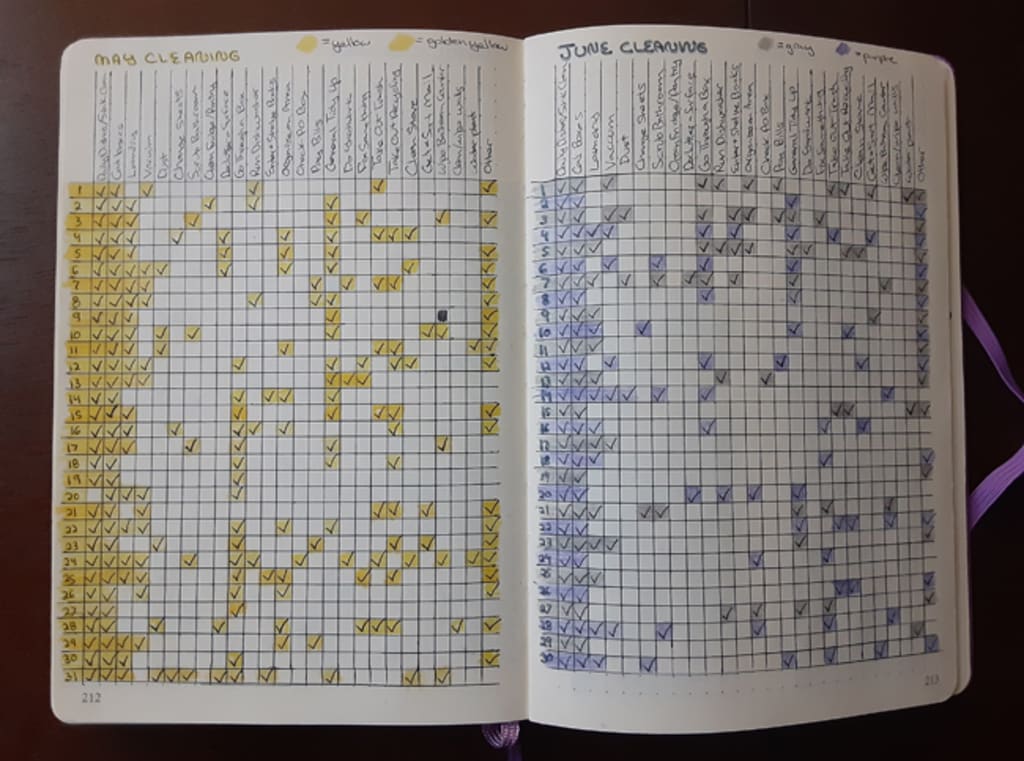
I’m just 1 person who loves to bullet journal. Given the number of bogs, vlogs, Pinterest boards, Reddit threads, and Instagram accounts out there about bullet journaling, I’m far from alone. The core concept of a bullet journal (or bujo) is a journal in which they key items you want to accomplish in a day are displayed as a short, bulleted list.
Key Benefits of Bullet Journaling
- Organizing your life on paper (note: there are digital versions as well)
- Focusing your attention on tasks you can realistically achieve in a day
- Conglomerating all your notes, lists, plans, etc. into one tool
- Having a record of your daily accomplishments
- Tracking progress to build habits
- Constantly reflecting and reevaluating priorities
- Having an outlet for creativity
- Keeping events, deadlines, and long-term goals from getting away from you
- Customizing a planner so it can be exactly what you want it to be without wasting space/pages
There are hundreds of tutorials, but a good place to start is with this lesson about how rapid journaling works by the founder, Ryder Carroll. I have kept a bullet journal since 2018, and for the first three of those years, I didn’t use the rapid journaling method at all. Instead, my bulleted lists were the things I did in a day, rather than the things I needed to do. Now, my bullet journal contains both, along with all sorts of trackers, cover pages, collections, and more.
Typical Components of a Bullet Journal
Here are the typical sorts of pages you’ll find in a bujo, with examples from some of my journals.
1. Index: a list of the pages and contents in your bullet journal, so you can easily find what you're looking for. You can organize your index sequentially in page order (shown below) or group them by content type, such as having an index section for all your calendars, another for all your trackers, another for all your weekly logs, etc.
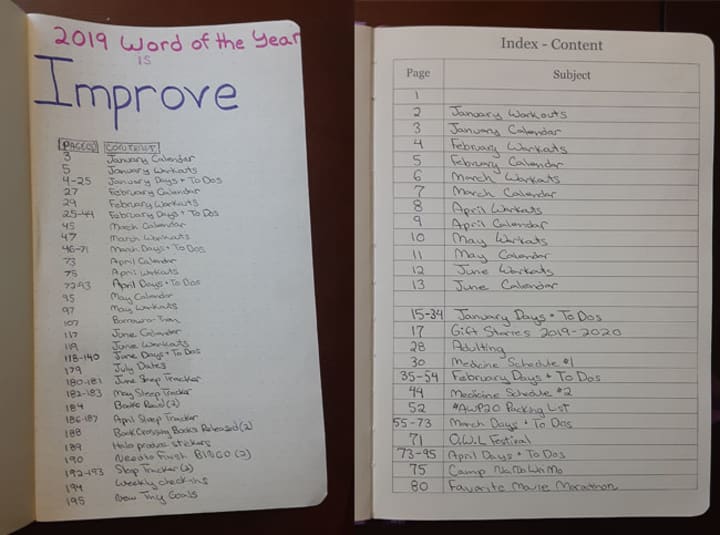
2. Key: the symbols and colors you use to indicate things like completed tasks, categories, months, etc. Use a key that seems easy to remember and stick to, but feel free to make changes to it or add to it throughout the year.
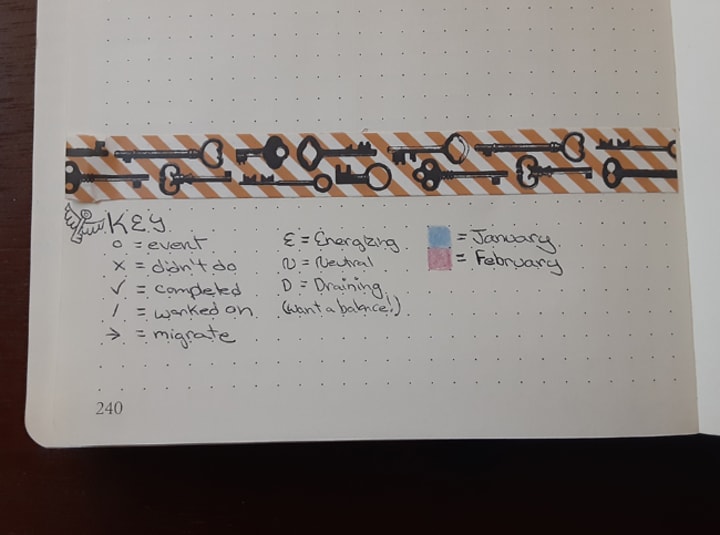
3. Spreads: something that takes up more than one page of space. Below is an example of a spread of books read during the six-month lifespan of this bujo.

4. Cover pages: a largely decorative page that divides one section or month from another. Cover pages can be fun ways to showcase a new theme, illustrate your favorite quote, summarize your month, and more. Below are examples of two month cover pages.
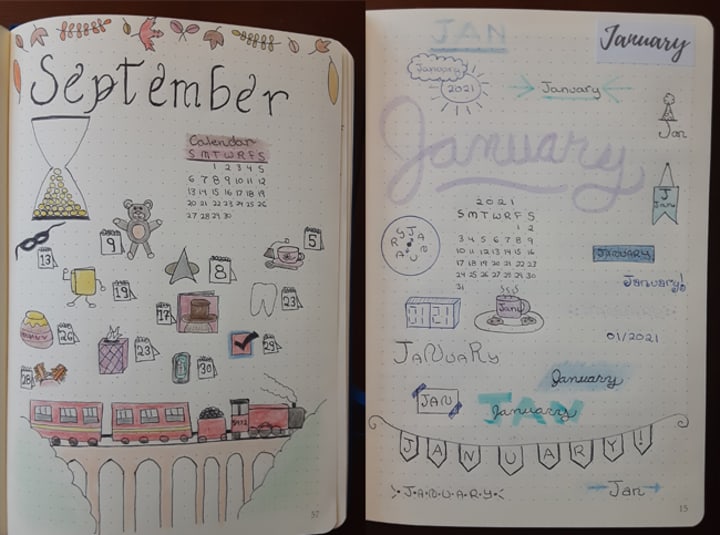
5. Future Logs/Year Logs: keep track of events, birthdays, long-term goals, anniversaries, etc. for an upcoming year. There are many ways these logs can be displayed: horizontally, vertically, or even circularly like the example below.

6. Month Logs: keep track of dates and anything else for an upcoming month. You can incorporate trackers, moods, playlists, events, or anything else that seems useful to display in a monthly overview. I use mine to keep track of daily progress in workouts, volunteering, reading, cleaning, fitbit steps, sticking to my finances, and more.
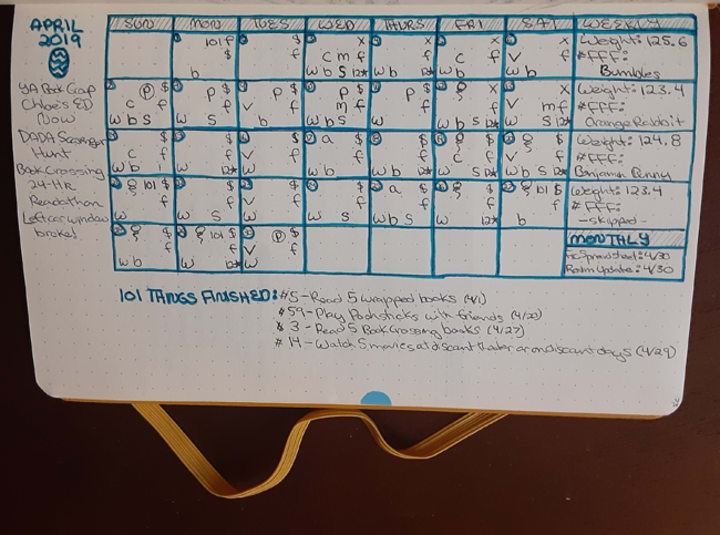
7. Week Logs: keep track of your daily tasks for an upcoming week. This is where you use the "rapid journaling" method to list a finite number of prioritized tasks each day and evaluate them. You can put other information that's important to your week in this log as well. I like to include a quote I came across that week, for example.
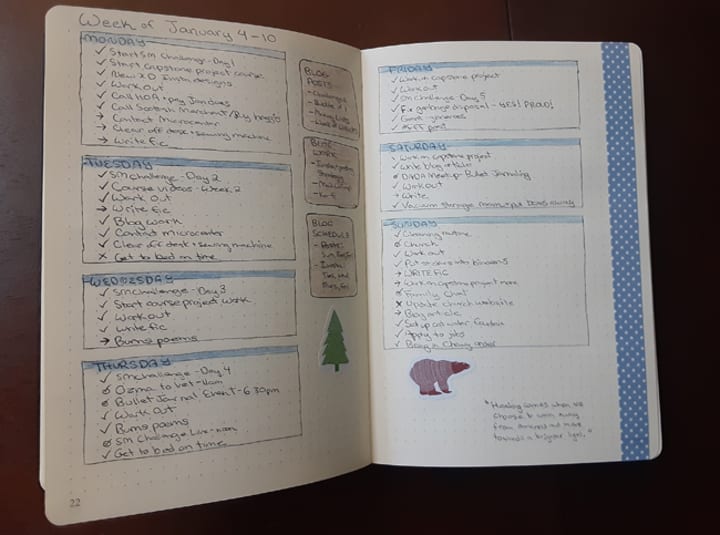
8. Trackers: keep track of your progress toward a practice you want to develop into a habit, such as taking meds, exercising, cleaning, etc. Trackers can be simple grids (see the image at the top of this story) or creative and fun (see the image below of my house-cleaning progress, color-coded by week).
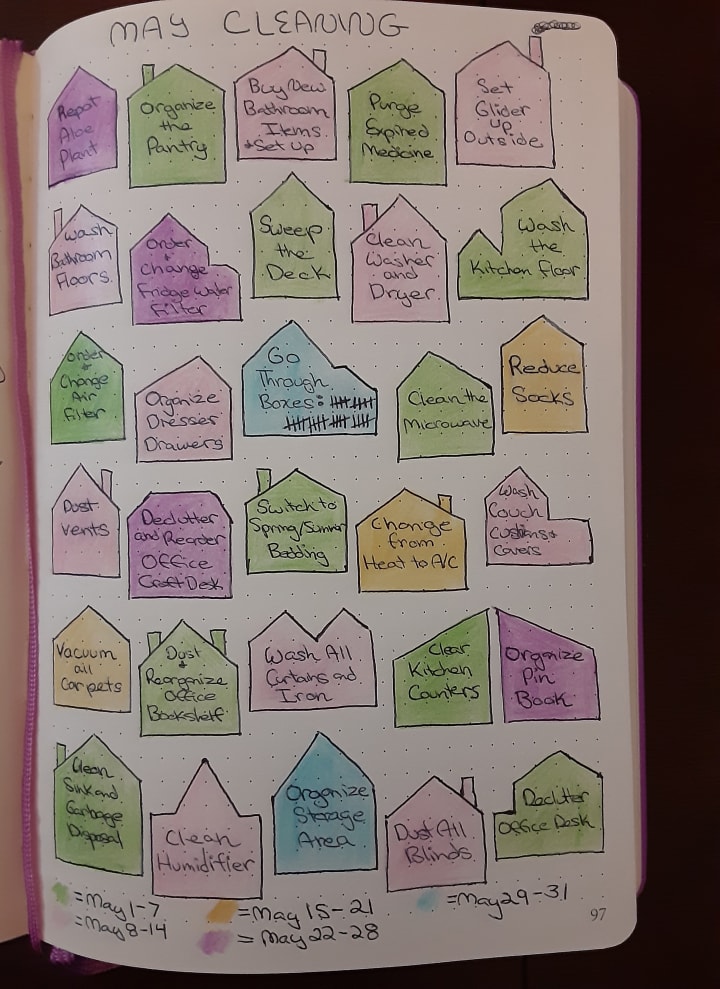
9. Collections: groupings or lists for a certain topic such as books read, things you need to pack, a gratitude log, etc. See below for an example of movies watched (the numbers on each ticket corresponds to the date I saw the movie, for extra reference) and shows watched.

10. Practice: doodles, sketches, pen/marker tests, and other elements. You can have fun with these pages, use them to create design elements (fonts, headers, etc.) you could use later in your bujo, or even test for bleed-through.
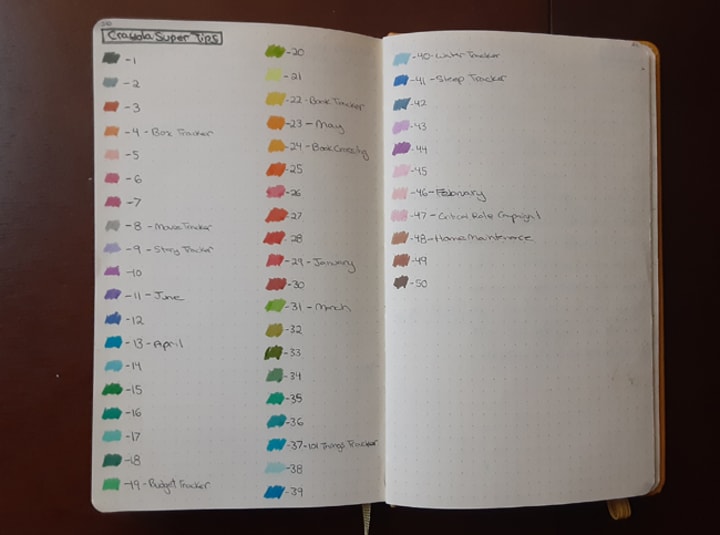
Your bullet journal can have every single one of these components or just a few of them. What’s most important is to create a system that is useful to you. It doesn’t have to look as gorgeous as some of the pinnable spreads people share on the internet; it just has to work for you.
In another story, I’ll be sharing some of my top bullet journal tips and other things I’ve learned throughout my years of keeping a bullet journal.
About the Creator
Kate McDevitt
Just like the creations I build out of LEGO bricks or the stories I create on the page, I am constantly working on building a life and figuring out how to adult. I'm Just 1 Person Blog: http://imjust1person.com
Enjoyed the story? Support the Creator.
Subscribe for free to receive all their stories in your feed. You could also pledge your support or give them a one-off tip, letting them know you appreciate their work.






Comments
There are no comments for this story
Be the first to respond and start the conversation.